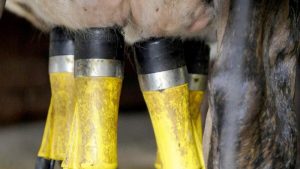
The Australian dairy industry ranks third in the country’s agricultural sector after red meat and wheat. Dairy production is a significant source of employment in the regions. In 2022-23, approximately 33,500 people were directly employed on dairy farms and milk processing, The DairyNews reports, citing a Dairy Australia report.
Dairy production is well developed in temperate and some subtropical regions of Australia. While the majority of milk is produced in south-east Australia, all states have dairy production facilities that can supply fresh drinking milk to nearby towns and cities.
Most states produce a range of high-quality dairy products, including fresh milk, custards, yogurts and specialty cheeses. Production of dairy products for export is highly concentrated in south-eastern Australia and includes cheddar, mozzarella cheese, milk powder and butterfat.
The Australian dairy industry experienced significant growth in the 1990s, which plateaued in the early 2000s. In addition to industry deregulation, this period coincided with a severe and prolonged period of drought. Market growth and margin volatility have undermined confidence among many farmers looking for reliable returns. This has led to ongoing consolidation among both dairy farmers and the dairy processing industry.

In line with long-term trends, the number of dairy farms continues to fall, with 2022-23 seeing a 6% decline year-on-year. However, while the number of farms has decreased, the average farm size has increased with the number of large farms – and their share of milk production has increased.
While the majority of milk produced is consumed domestically, Australia is also a major exporter and importer of dairy products (primarily from New Zealand).
High milk prices (and high milk costs) continued into the 2022-23 season, with strong competition for milk among top farmers receiving an average of $9.80/kg MS ($52/100kg milk). These figures do not include government support, income from livestock sales, and more.
Australia has historically been considered a low-cost dairy producer; However, farm costs have increased in recent years in response to the need to adapt to higher costs of supplementary feed and water distribution, particularly in Northern Victoria and New South Wales.
The size of the domestic dairy market has also increased due to population growth. As a result, the share of milk that is exported and Australia’s share of international dairy trade have declined.
























